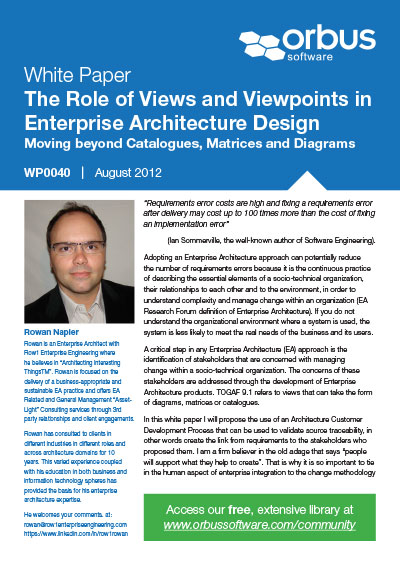A paper examining the use of an Architecture Customer Development Process when adopting Enterprise Architecture to create a link between requirements and the stakeholders who propose them.
“Requirements error costs are high and fixing a requirements error after delivery may cost up to 100 times more than the cost of fixing an implementation error” (Ian Sommerville, the well-known author of Software Engineering).
Adopting an Enterprise Architecture approach can potentially reduce the number of requirements errors because it is the continuous practice of describing the essential elements of a socio-technical organization, their relationships to each other and to the environment, in order to understand complexity and manage change within an organization (EA Research Forum definition of Enterprise Architecture). If you do not understand the organizational environment where a system is used, the system is less likely to meet the real needs of the business and its users.
A critical step in any Enterprise Architecture (EA) approach is the identification of stakeholders that are concerned with managing change within a socio-technical organization. The concerns of these stakeholders are addressed through the development of Enterprise Architecture products. TOGAF 9.1 refers to views that can take the form of diagrams, matrices or catalogues.
n this white paper I will propose the use of an Architecture Customer Development Process that can be used to validate source traceability, in other words create the link from requirements to the stakeholders who proposed them. I am a firm believer in the old adage that says “people will support what they help to create”. That is why it is so important to tie in the human aspect of enterprise integration to the change methodology and requirements process where people fulfil the role of change agent and that of potential and actual resource within the organization.
Please login to continue reading or sign up to download the white paper.
